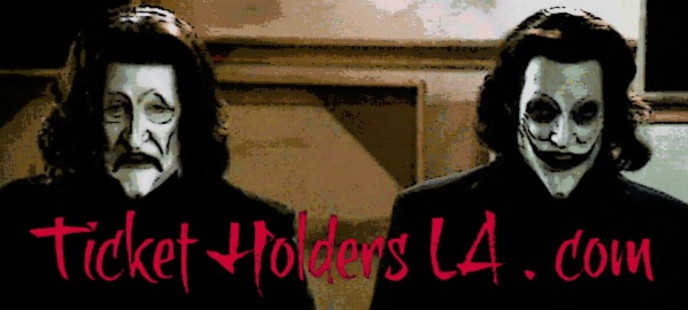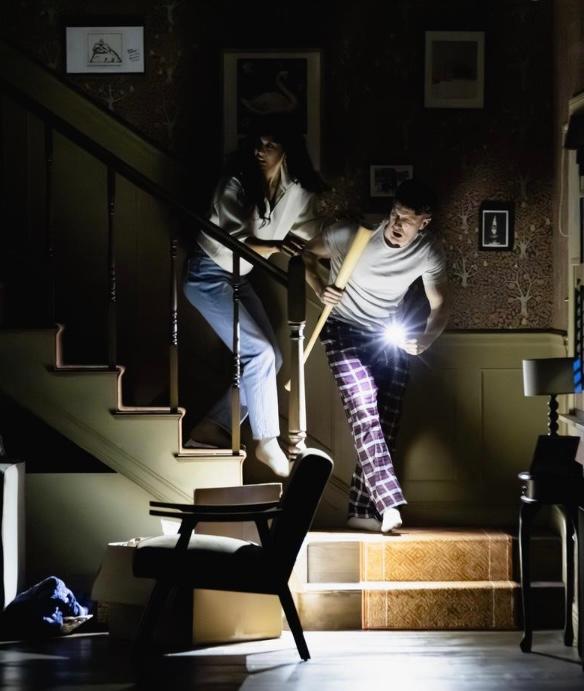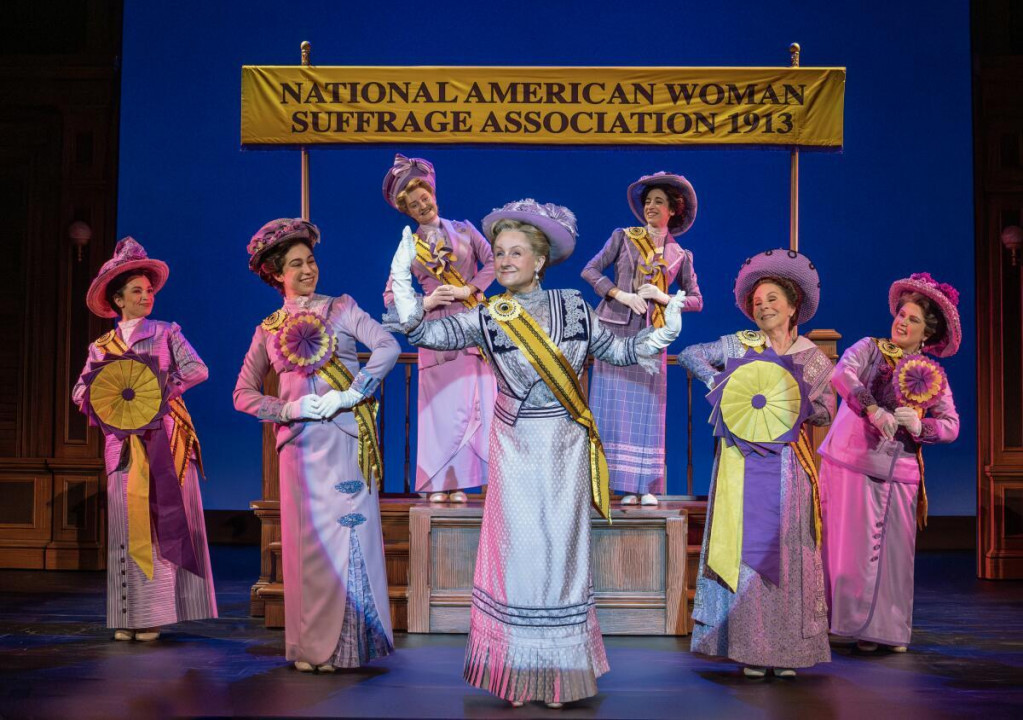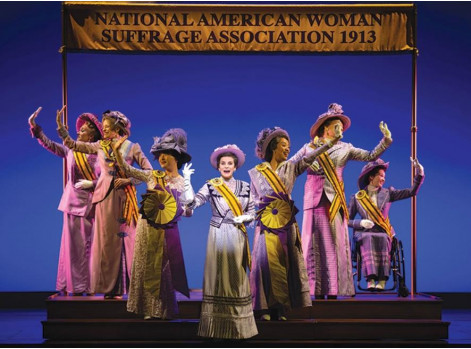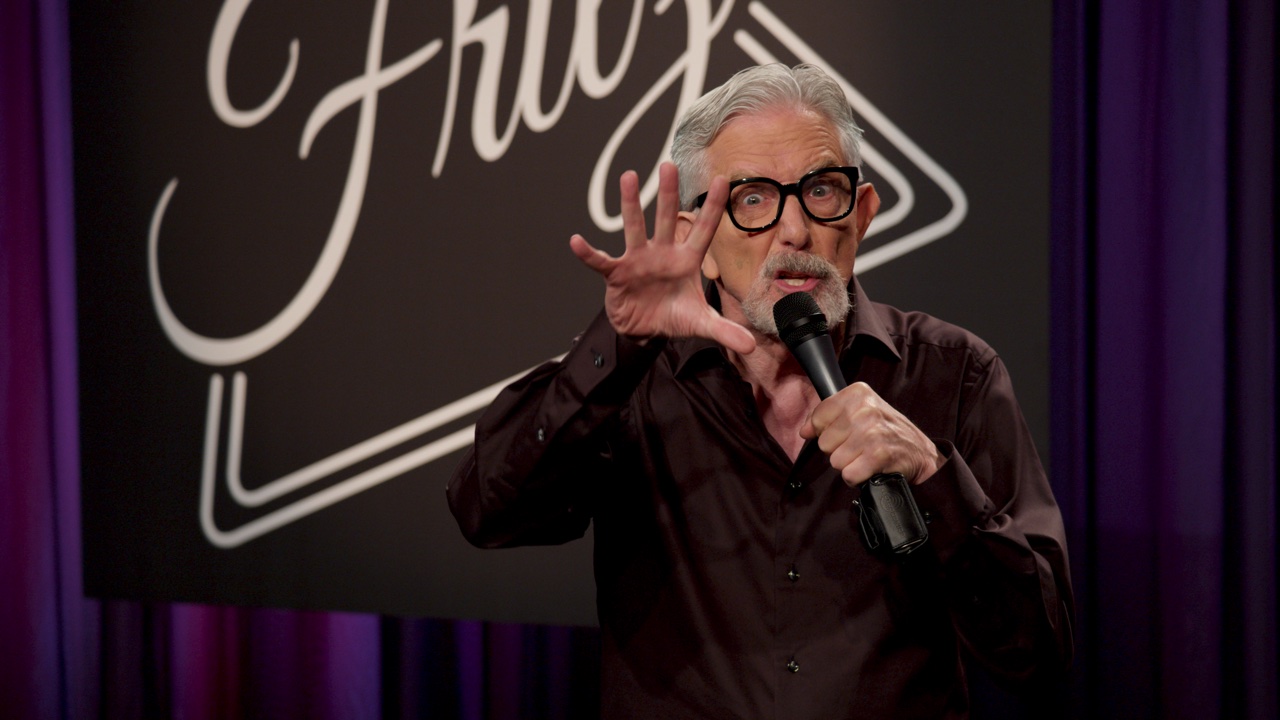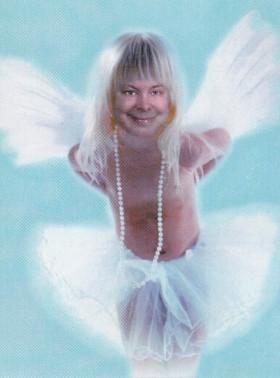- HOME
- CURRENT REVIEWS
- "WAITING FOR WALK"
- TRAVIS MONOLOGUES 2025
- FEATURES & INTERVIEWS
- MUSIC & OUT OF TOWN REVIEWS
- RANTS & RAVINGS
- MEMORIES OF GENIUS
- H.A. EAGLEHART: HIEW'S VIEWS
- TRAVIS ART FOR SALE - Collection 1
- TRAVIS ART FOR SALE - Collection 2
- TRAVIS ART FOR SALE - Collection 3
- TRAVIS ART FOR SALE - Collection 4
- TRAVIS ART FOR SALE - Collection 5
- TRAVIS ART FOR SALE - Collection 6
- TRAVIS ART FOR SALE - Saints & Sinners
- TRAVIS ART FOR SALE - Pet Portraits on Commission
- COMPOSER SONATA: Hershey Felder Portraits
- TRAVIS' ANCIENT & NFS ART
- TRAVIS' PHOTOGRAPHY
- PHOTOS: FINDING MY MUSE
- REVIEW ARCHIVES: WINTER 2025 to... ?
- REVIEW ARCHIVES: WINTER - FALL 2025
- REVIEW ARCHIVES: SUMMER - WINTER 2024
- REVIEW ARCHIVES: FALL 2023 - SPRING 2024
- A LIFE IN PHOTOS [1946 - 1996]
- A LIFE IN PHOTOS [1997 - 2015]
- A LIFE IN PHOTOS [2016 - 2018]
- A LIFE IN PHOTOS [2019 - 2021]
- A LIFE IN PHOTOS [2022 - 2023]
- A LIFE IN PHOTOS [2024 - 2025]
- A LIFE IN PHOTOS [2026 to...
- TICKETHOLDER AWARDS 2024 - Part One
- TICKETHOLDER AWARDS 2024 - Part Two
- LA DRAMA CRITICS CIRCLE AWARDS 2024
- TRAVIS' ACTING SITE & DEMO REELS: travismichaelholder.com
- CONTACT THLA
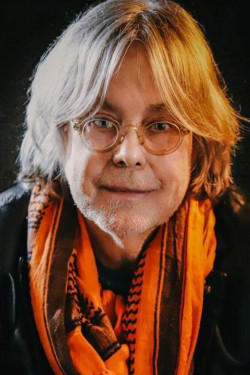
EVERYBODY'S GOT ONE
CURRENT REVIEWS
by TRAVIS MICHAEL HOLDER
"Critics watch a battle from a high place then come down to shoot the survivors." ~ Ernest Hemingway
Paranormal Activity
Photo by Kyle Flubacker
Ahmanson Theatre
As if the audience wasn’t already on edge after a soggy and difficult trek downtown on a severely stormy Los Angeles night, when the cavernous Ahmanson goes completely dark and the house is virtually attacked by cacophonous, ear-splitting sound, if nerves weren’t already frayed, this should certainly do the trick.
And surely, nothing could be more intentional. One can almost imagine Paranormal Activity’s original director Felix Barrett (his work restaged here by the play’s author Levi Holloway) and sound designer Gareth Fry sitting out front during the play’s initial tech rehearsals wringing their hands together and laughing manically like cartoon villains as the wild and disconcerting blast of ambient noise fills the house.
This unusual opening choice is almost as if the show’s creators are giving us a warning: This is only the beginning, motherfuckers, so get ready to scream out loud and jump out of your seats on a regular basis for the next couple of hours.
Based on the successful Paranormal Activity film franchise of the same name, this stage adaptation, featuring an all-new story of demonic possession out to destroy a young newly married couple, is nothing one would expect to see live onstage at the venerable Ahmanson.
Relocating to London to escape weird and inexplicable happenings in their Chicago apartment that seemed to be quickly unraveling the sanity of the young wife (Cher Alvarez), naturally, as in any such intrinsically spooky yarn you’ve ever seen, it soon appears that the ghostly perpetrator has made the journey across the pond with them. Lou’s husband James (Patrick Heusinger) is not a believer, watching the proceedings unfold as his bride of only a year quickly begins to lose her proverbial marbles.
We, of course, know what is intent on haunting Lou is something tangible, made all-too clear to us by the astounding visual effects brought to life by master stage illusionist Chris Fisher, special Tony Award winner earlier this year for his illusions and technical effects for the Broadway debut of yet another surprising live theatrical adaptation: TV’s popular Stranger Things series.
Holloway has brought along some clever dialogue but in general, this is a fairly—yet forgivably—predictable and by-the-book supernatural adventure, the script mainly utilized as a consistently tricky tool to bring to the stage inexplicable phantasms and visual tricks sure to make one’s jaw drop to just about there.
Alvarez does her best breathing life into the familiar stereotypical role of a wife on the verge of unraveling, alone in her visions with no one there to see what she sees except us, yet Heusinger is far more interesting as the concerned husband. As the tale unfolds, he is also given a better opportunity to develop a far stronger character arc than his costar as James starts to believe Lou isn’t as deluded as he once thought she was.
Although most of the two-act play features only these two actors struggling to maintain their sanity, there are also two lesser characters who briefly arrive to further complicate things.
Kate Fry makes a fleeting appearance as a famous paranormal investigator who uncharacteristically for her breed sprints out of the couple’s house at the very first “Boo!” while Shannon Cochran’s cameo as James’ super-religious mother, who shows up at their door with luggage and a need to bring her son back to Jesus with an annoying little prayer session, has by far the juiciest role—something she plays for all it’s worth.
Fly Davis’ towering, two-level doll house of a set allows for many shriek-inducing twists and chills to materialize, aided considerably by Anna Watson’s moody lighting and Luke Hall’s video effects.
Still, without a doubt it is Fisher’s illusions that are the most impressive element of all in what makes this highly entertaining and innovative Paranormal Activity a production not to be missed and provides a memorable evening out that thrills and chills and actually scares the living begeezus out of anyone with a pulse and an interest in experiencing something unlike anything you’ve ever before seen unfold live and in person.
THROUGH DEC. 7: Ahmanson Theatre, 135 N. Grand Av., LA. 213.628.2772 or CenterTheatreGroup.org
Suffs
Photo by Joan Marcus
Pantages Theatre
I was excited to hear the announcement that Shaina Taub’s musical Suffs would be coming to LA after its groundbreaking run on Broadway which received multiple honors, including Tony Awards for Taub for Best Book and Best Score.
I wasn’t completely sure I could cover Suffs with complete objectivity since I had been hearing about its early workshops and development for several years from my dear friend Jenn Colella, who originated the role of real-life suffragist Carrie Chapman Catt in the production and had been with the show’s artistic journey from the very beginning.
Based on Jailed for Freedom, pioneering early woman's rights activist Doris Stevens’ 1920 memoir chronicling the courageous fight for equality through the Congressional Union for Woman Suffrage and later the National Woman’s Party.
Germinating from an idea producer Rachel Sussman had way back in middle school, she subsequently gave a copy of Stevens’ book to Taub, who was immediately inspired to create Suffs, thus becoming only the second woman in history to write the book, music, and to star in her own work on Broadway, appearing as Alice Paul, one of the movement’s most prominent leaders and strategists.
After exhaustive workshops and readings, Suffs was set to begin its journey to the Great White Way with a planned production at the Public in 2020 which soon after faced postponement thanks to the onslaught of the COVID pandemic. It was rescheduled to debut at the Delacourt Theatre the following summer as part of the Public’s Shakespeare in the Park season but again, the decision was made to delay it until it’s off-Broadway premiere in April of 2022.
The following spring, while teaching together in Felipe Havranek’s Livin’ Arts acting and musical theatre intensives in South America, Jenn (Tony nominee as the pilot in Come From Away a few seasons past) spoke extensively and with unswerving passion about the project to me and our fellow instructor, choreographer Eric Campros.
Jenn’s commitment to continuing to share Taub’s extraordinary tale of the early 20th-century emotionally uphill 60-year struggle for voting rights for woman, which led to the establishment of the 19th Amendment to our Constitution in 1920, was a given—and when she received the news while we were working in Buenos Aires that it would be remounted on Broadway the following spring, her excitement was only second to also soon after learning from her wife Mo Mullen that they would become parents to their daughter Morrison, born a few months before the musical’s debut at the Music Box Theatre. It was amazing Jenn could walk around and still touch the ground.
Photo by Joan Marcus of Jenn Colella and the original Broadway cast of SUFFS
Hardly a story of corn as high as an elephant’s eye or real-good clambakes, Suffs marks an extraordinary moment in the evolution of musical theatre, mostly thanks to Taub’s highly relevant and accessible book and haunting, arresting musical score. Under the direction of Leigh Silverman and featuring choreography by Mayte Natalio, jaw-dropping costuming by Paul Tazewell, and lighting design by Lap Chi Chu among its uniformly dynamic design elements, although I’m sorry I never got to see Jenn leading the original New York cast, the team touring with it on the road could not be more impressive.
Maya Keleher here takes over from Taub as Alice Paul and Marya Grandy as Carrie Chapman Catt, with Danyel Fulton as African American activist Ida B. Wells, Livvy Marcus as Doris Stevens, and Jenny Ashman as President Woodrow Wilson, all topnotch musical theatre artists leading what is surely to be the most awarded ensemble of the season in Los Angeles.
The magnificent vocal power of all the members of this ensemble is nothing short of stunning and what sound designer Jason Crystal has accomplished in the usually acoustically challenged Pantages is something to be commended.
There are many standout performances in the large cast, with particular kudos to the eleventh-hour turn by Gwynne Wood as the grieving mother of a lost soldier whose actual letter to a Tennessee congressman changed the final vote in favor of adopting the history-changing amendment and to understudy Amanda K. Lopez, who stepped in at the last moment on opening night to literally steal the show as socialite turned fervent suffragist Inez Milholland.
Suffs goes to the top of my list as one of the most ambitious and memorable musicals of all time, providing a moving, inspiring, entirely credible, and still enjoyable experience paying long overdue homage to a defining moment in our country’s history while still managing to be a charming character-driven entertainment.
For me, I felt a special connection to Taub’s show-stopping “I Was Here,” sung by Ida and some of the other hardest working suffragists after the passing of the amendment:
“I want your mother to know I was here
I want your children to know I was here
I want your great-granddaughter to know I was here
I need her to know I was here.”
I began my own lifelong commitment to fight for equality and justice as a very young teen, traveling during show breaks and between school semesters to sit in the backs of buses, working tirelessly as a member of SNCC, marching shoulder-to-shoulder in freedom marches with Diane Nash, and onceceven being arrested while storming the pedestrian bridge in Century City. I worked with the Committee to Ratify the Equal Rights Amendment in the late 70s and early 80s, wrote articles and later took to the streets again to stir the pot for marriage equality, not to mention the legalization of cannabis.
Now, at 79, I have often felt myself lumped into the mix as nothing but an ineffectual old white dude who some of the younger activists think should just lie down and let the primordial tar cover me from the toes up.
What has been accomplished in the name of rights and justice by others who came before the current stand of cotton should be honored, studied, and appreciated, not passed off as old news. Suffs, in all its glory, does just that.
Personally, the most emotional moment during the opening night performance of Suffs came unexpectedly. It was thrilling to see busloads of schoolkids in front of the theatre, obviously filled with anticipation to be included in what will surely be a pivotal experience in their young and impressionable lives.
Near the end of the play, after the passage of the amendment, Doris Stevens and her love Dudley Malone contemplate marriage on one side of the stage—the fact that her future husband is played by African American actress Brandi Porter not lost in the message—while on the other side of the stage, Grandy as Carrie Catt wonders with her secret love Mollie Hay (Tami Dahbura) if they, too, will ever be allowed to marry.
When Catt and Hay share a modest kiss, pockets of approving and clearly youthful hoots and cheers rose up throughout the house and especially from the mezzanine, the area where most of those eager and open-minded bussed-in teenagers were seated.
It was an unforgettable moment, giving me a sudden wave of hope for the future of our poor maligned country—a feeling I’ve found nearly impossible to muster in the light of our current national nightmare as a self-serving madman and his cowardly enablers drag us steadily backward into the dark ages.
THROUGH DEC. 7: Pantages Theatre, 6233 Hollywood Blvd., Hollywood. 800.982.2787 or broadwayinhollywood.com
Unassisted Residency
El Portal Theatre
Longtime Los Angeles weatherman Fritz Coleman retired in 2020 after four decades delivering his signature uncannily cheery forecasts on a daily basis but at age 76, his solo show Unassisted Residency, which plays once monthly at the El Portal’s intimate Monroe Forum, proves he’s still got the chops to deliver a jocular and lighthearted tsunami to his eager and most loyal fans.
Coleman began his career coming to LA to pursue his passion for standup comedy in the early 80s after first achieving success as a well-loved deejay radio personality in Buffalo, New York.
As the story goes, a producer at NBC caught his act one night at a local club and began to woo him to become a weatherman at KNBC-TV since our weather here was so consistent that he felt it needed a little on-air boost of humor to make it more interesting.
Delivering the daily forecast with a twinkle in his eye beginning in 1984 didn’t stop Coleman from continuing to chase his original dream by performing on local stages in several successful live shows, including his hilarious award-winning turn in The Reception: It’s Me, Dad! which played around town for several years to sold out houses.
Now, after leaving NBC four years ago, Coleman is back but the demographics have changed—or I might politely say… matured.
In my own case, as someone a year older than Coleman, his focus on finding the humor in aging is most welcome. In Unassisted Residency, the comedian talks about the challenges life has to offer in these, our so-called golden years, from physical deterioration to losing contemporaries on a regular basis to navigating the brave new world of technology and social media.
As his opening warmup act, the very funny and professionally self-deprecating Wendy Liebman notes, while looking out at the sea of gray hair and Hawaiian camp shirts in their audience, that Coleman chose to present his show as Sunday matinees so his target audience can shuffle our drooping derrières on home before dark.
Along the way, he also tackles subjects such as retirement communities, nonstop doctors’ appointments, incontinence, and Viagra, not to mention having grown up sucking in our parents’ omnipresent clouds of secondhand tobacco smoke and that generation’s lackadaisical attitude toward our safety and our health, all before moving on discuss to his all-new admiration for those heroic modern educators who during the pandemic had the patience to deal with zoom-teaching his grandkids.
The one thing he doesn’t talk much about is the weather—that is beyond mentioning how grateful he is that our current heat wave didn’t deter those gathered from venturing out of our caves and offering as a throwaway that one of the reasons he retired four years ago was climate change. Although he never says it, he doesn’t really have to; we get that even for someone as funny as Coleman, everyone has their limits when it comes to the potentially catastrophic future for our poor misused and abused planet.
Then when he launches into reminiscing about the amazingly incessant search for sexual gratification in our younger years (that time Stephen King once wrote when the males of the species all look at life through a spermy haze) and how that has changed since then. As a now single guy still looking for love—with some choice remarks about online dating sites—he tells a rather steamy tale about one date that proves it ain’t over ‘til it’s over, something of which I can definitely relate.
I first met Coleman in 1988 or 1989 when I did a feature interview with him as a cover story for The Tolucan (the more industry-oriented and less Evening Women’s Club-ish-pandering predecessor of the Tolucan Times).
He was gracious and charming and kept me laughing so hard back then that I couldn’t take notes fast enough, a knack he not only hasn’t lost but has sharpened considerably over the past 40 years. I couldn’t help wondering how many of the audience members at the Forum have been following him since then and for whom the topic of not-so gently aging hits home as dead-center as it did me.
This doesn’t mean you have to be 70-something to appreciate Fritz Coleman’s hilarious gift for creating homespun storytelling in his ever-extending monthly outing called Unassisted Residency.
My partner Hugh, who is a mere 42 years my junior and was quite literally at least three decades younger than anyone else in the audience last Sunday, laughed longer and louder than anyone else in the audience—perhaps a reaction to hearing me bitch continuously about getting old for the last 12 years?
PLAYS one Sunday each month at the El Portal Theatre’s Monroe Forum Theatre, 5269 Lankershim Blvd., NoHo. For schedule: www.elportaltheatre.com/fritzcoleman.html
